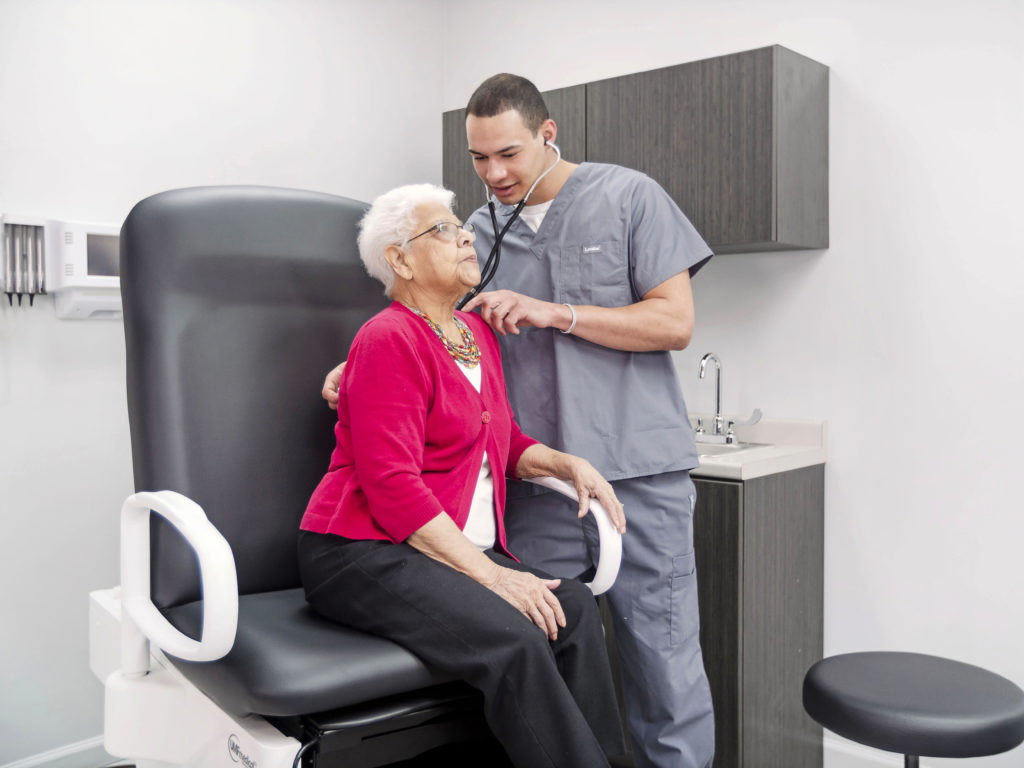Now more than ever, patient comfort and security are top of mind for anyone seeking treatment at a physician’s office, urgent care center, or large health system. Considering the COVID-19 pandemic, patient worry and fear of even entering a health care facility is an overwhelming feeling. Exam rooms often feel cold and uninviting regardless of a pandemic. As a provider, in addition to exceptional and compassionate care, it is important to keep your patients confident you are keeping their comfort, safety and security a priority.
Consider the patient-clinician experience as inviting a guest into your home. When entertaining, the main goals are to provide comfort and make the guest feel at ease. Upon leaving, they should feel satisfied with their visit.
Below are five ways to help ensure patient comfort and security while they’re seeking medical treatment.
Cleanliness and Order
A visibly clean and orderly exam room is vital to patient comfort. A clean and infection-free environment leaves a patient secure in knowing their health and well-being is recognized by office staff. The spread of infectious pathogens is a risk to all patients that have compromised immune systems, or someone that comes in for a well check-up and ends up leaving with a cold. Wiping down equipment and exam table upholstery with approved, medical-grade cleaners is a quick and pain-free task for patient safety and security.
Updated Upholstery & Equipment
Over time and with continued use, an exam table will develop standard wear and tear on the upholstery. Make sure your exam table tops and leg pads are free of holes, gashes, exposed foam or discoloration. Outdated and over-used equipment not only can become snagged and can create an environment for harboring bacteria and other microorganisms, it’s also unappealing. Keep the room’s aesthetic and style in mind when considering patient comfort.
Accessibility to the Exam Table
Consider the diverse and aging patient population and how they access the exam table and other furniture and fixtures in your exam room. The exam room equipment should be suitable and meet the needs of all patient types: elderly, pregnant, obese, pediatric, etc. As such, consider having an exam table with ADA accessibility, a weight capacity for larger patients, and patient-assist arms for ease of entry and exit of the exam table.
Ask Your Patient if They are Comfortable
Pay attention to the patient’s body language, tonality, and posture. If they appear stressed or uncomfortable, take a moment and ask them how they are feeling. Slowing down and taking a moment to express empathy can do wonders for your patient’s comfort level. Therefore, expressing an interest in their well-being helps the patient to be open and honest about their symptoms, health concerns, diagnosis, and prognosis.
Make Eye Contact
Eye contact with your patient creates a positive connection and exudes compassion and undivided attention. It is one of the easiest ways to make a person feel recognized and understood. Try to avoid staring at the computer screen while going through the litany of questions required and making notations for the patient’s chart.
Additionally, mask requirements have made it even more important for you to make eye contact. Remember you did not enter the healthcare field to be a data entry professional. Where as, you entered this field because you care about caring. Eye contact creates a trusting relationship between patient and clinician.
Patient comfort should always be top of mind. Remember, that one encounter, though one of many to you in a day, is likely the most important visit the patient is making that day. Room aesthetic, updated and clean equipment, and compassion make all the difference when considering patient comfort and security.






